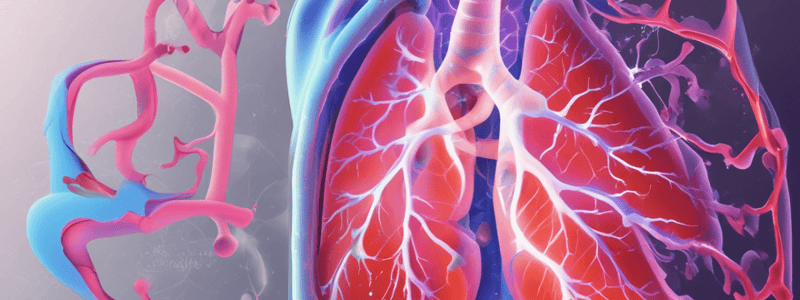Podcast
Questions and Answers
Which of the following is the most accurate analogy for restrictive lung disease?
Which of the following is the most accurate analogy for restrictive lung disease?
- A balloon with a gladwrap around it, limiting its ability to inflate (correct)
- A balloon with a hair tie around the middle, restricting its expansion
- A balloon with a heavy weight on top of it, preventing it from fully expanding
- A balloon with a small puncture, causing air to slowly leak out
Which of the following best describes obstructive lung disease?
Which of the following best describes obstructive lung disease?
- A condition that limits the ability to exhale air from the lungs (correct)
- A specific disease, such as asthma or chronic obstructive pulmonary disease (COPD)
- A general term that encompasses both restrictive and obstructive lung conditions
- A condition that restricts the expansion of the lungs during inhalation
Which of the following statements is true regarding restrictive lung diseases?
Which of the following statements is true regarding restrictive lung diseases?
- They are caused by an increase in lung distensibility, allowing for greater lung expansion
- They are caused by obstructions in the airways, limiting airflow during exhalation
- They are characterized by reduced lung volumes, particularly reduced total lung capacity (TLC) (correct)
- They are a specific disease, such as asthma or chronic obstructive pulmonary disease (COPD)
Which of the following conditions is an example of an obstructive lung disease?
Which of the following conditions is an example of an obstructive lung disease?
Which of the following statements is true regarding the relationship between obstructive and restrictive lung diseases?
Which of the following statements is true regarding the relationship between obstructive and restrictive lung diseases?
According to the analogy provided in the text, which of the following best represents obstructive lung disease?
According to the analogy provided in the text, which of the following best represents obstructive lung disease?
Flashcards are hidden until you start studying




